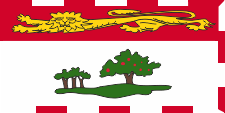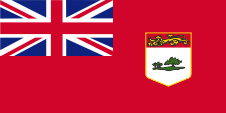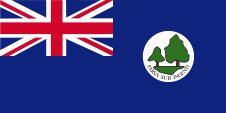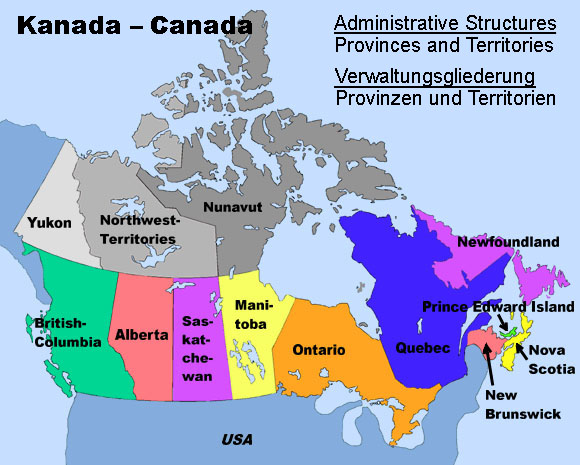mobile View, to the German Version tap the flag


- Canadian province
- own names:
– English: Prince Edward Island
– French: Île du Prince-Édouard
- name to 1784: Île du Saint-Jean
• Flag
• Historical Flags
• Meaning/Origin of the Flag
• Coat of Arms
• Meaning/Origin of the Coat of Arms
• Map
• Numbers and Facts
• History
• Origin of the Country's Name

Flag of the province of Prince Edward Island,
ratio = 1:2,
Source: Corel Draw 4







1878–1905,
Flag of the province,
ratio = 1:2,
Source, by:
World Statesmen




1905–1964,
Flag of the government (state flag),
ratio = 1:2,
Source, by:
World Statesmen




The today's flag of Prince Edward Island was officially hoisted for the first time on 24th of May in 1964. It is a scutcheon flag, because it shows the design of the coat of arms of the province. Normally the province would, like every other province too, not have had its own flag and should only have used the British flags or, from 1870, the Canadian flags. Nevertheless they wanted, like as in all other provinces, to have its own flag, which, like as in all other provinces, never was approved. They, apparently and significantly, introduced a Red Ensign in the year 1878, which showed the then coat of arms of the province in the flying end. A clear violation of the Ensign system, because a Red Ensign is always awarded by the British Admiralty in addition to the Blue Ensign. After all, in 1905 the Red Ensign was replaced by a Blue Ensign, which was also never approved. United Kingdom introduced a flag system in 1864 in which:
• war ships fly the "White Ensign" (naval flag), a white flag often with an uninterrupted red St. George's-Cross and with the Union Jack in the upper staff quadrant of the flag,
• merchant ships fly a "Red Ensign" (also named "Civil Ensign" → civil flag, the real merchant flag), a red flag with the Union Jack in the upper staff quadrant of the flag, and
• governmental ships fly the "Blue Ensign" (flag for the use by the gouvernment → the actual state flag), a blue flag with the Union Jack in the upper staff quadrant of the flag.
Since 1865 ships of colonial governments were permitted to fly the Blue Ensign with a badge in the flying end of the flag. The respective governments were asked to design appropriate badges. Merchant ships and seafaring persons from colonies were only permitted to use the Red Ensign with a badge, then also named Civil Ensign, if permission has been given to the respective colony by the British admiralty. Such a badge was often a regional landscape representation placed on a disk, often showing ships, historical events or even a kind of a logo. Very often, a badge also showed the name of the country or a motto. Some British possessions, however, already had a coat of arms from the beginning, or their badge was replaced by a coat of arms over the years. To ensure a uniform appearance in the flying end of the flags, coats of arms and other symbols were displayed on a white disk in the size of the earlier badges. There were also exceptions, because some colonies did not use the white disk and placed their escutcheon or even coat of arms directly on the bunting, sometimes enlarged. Already in the '40s they started to remove the white disk and placed the coat of arms directly or enlarged. This conversion process was done gradually, nowhere at the same time and completely. In some British possessions, flags with the white disc are still in use, in others no more and in some areas are both variants in use, next to each other. In the course of the gradual separation of Canada from the United Kingdom the Blue Ensign as an official British flag lost its meaning and became replaced by new provincial flags, which may be used by authorities and departments of the provinces and also by private individuals. In this way, Prince Edward Island introduced the current flag in 1964. For this purpose, the image of the coat of arms was transferred to the entire surface of the flag. A procedure that was also used to change the provincial flags of British Columbia, New Brunswick and Nova Scotia. The flag of this province thus follows, from history, British specifications. The following apply: Red = Pantone 186, Yellow = Pantone 116, Green = Pantone 364.
Source:
Volker Preuß,
Flaggen Enzyklopädie,
World Statesmen,
Die Welt der Flaggen


Escutcheon of Prince Edward Island,
Source, by:
Corel Draw 4

There is a regular coat of arms for the Prince Edward Island, with a console,
shield holders (supporters), withe a crest and the motto. Here is only depicted
the central part of the coat of arms, the escutcheon. The escutcheon of the
Prince Edward Island shows in the upper part a golden British lion on red
ground, a hint at the connexions to United Kingdom. Underneath a symbolic
depiction of the island. The coat of arms is surrounded by a red and white
board.
Source:
Volker Preuß,
Wikipedia (EN)


Map:
Volker Preuß

Area: 2.185 square miles
Inhabitants: 167.234 (2011)
Density of Population: 30 inh./sq.mi.
Capital: Charlottetown, 36.094 inh. (2016)
official Language: English
other Languages: French
Currency: Canadian currency
Time Zone: GMT – 4 h
Source:
Wikipedia (D)

1534 · the French explorer Jacques Cartier lands on the island and takes possession of the island for France
1608 · summary of all French possessions in the today's Canada under the name "New France"
1663 · New France (including St. Jean Island) becomes French crown colony
1713 · Peace of Utrecht, France has to cede the today's New Brunswick, Nova Scotia and the Island of Newfoundland to United Kingdom, however, the Islands of Royale (today's Cape Breton Island), St. Jean (today's Prince Edward Island) and St. Pierre / Miquelon remain French
1763 · Peace of Paris, France has to cede all its north american possessions to United Kingdom (British Northern America), except St. Pierre and Miquelon
1784 · division of Nova Scotia into four provinces ("sea provinces"), however under one common Governor General: Nova Scotia, New Brunswick, Cape Breton Island and Prince Edward Island, the provinces Cape Breton Island and Prince Edward Island get later re-annexed to Nova Scotia
1840 · union of the provinces of Nova Scotia, New Brunswick, Québec and Ontario in one colony (Kanada) with an own constitution
1867 · establishment of the Confederation of Canada (Dominion of Canada – with an own parliament) because of demands for autonomy, confederation by the four founding provinces New Brunswick, Québec, Ontario and Nova Scotia
1873 · re-founding of the province of Prince Edward Island by outsourcing from Nova Scotia, joining the Dominion of Canada
Source:
Atlas zur Geschichte,
World Statesmen,
Wikipedia (D),
Discovery '97

After Britain had taken over the reign from France in 1713, the island of St. Jean – named after St. Johannes – was renamed in 1784 in Prince Edward Island. It is named after Prince Edward Augustus, Duke of Kent and Strathearn, fourth son of King George III. of United Kingdom, Ireland and Hanover, and from Queen Charlotte, father of Queen Victoria.
Source:
Volker Preuß


![]()












